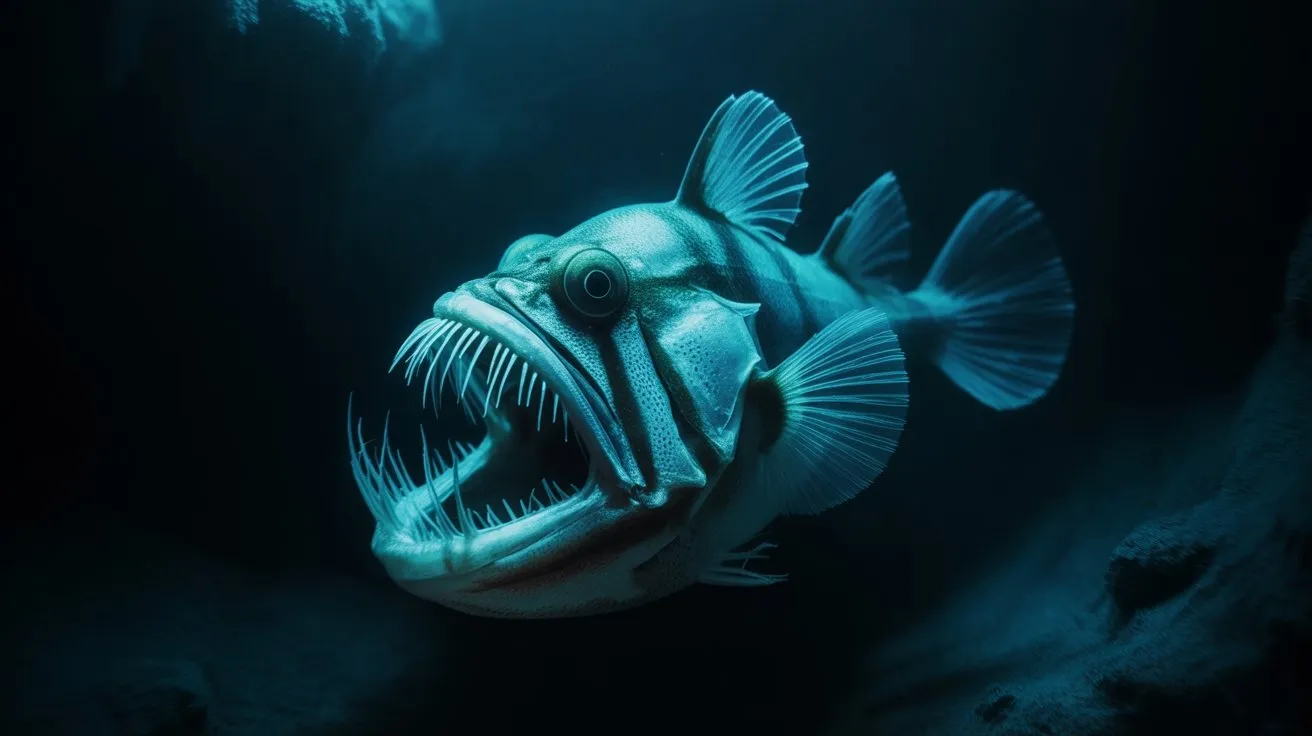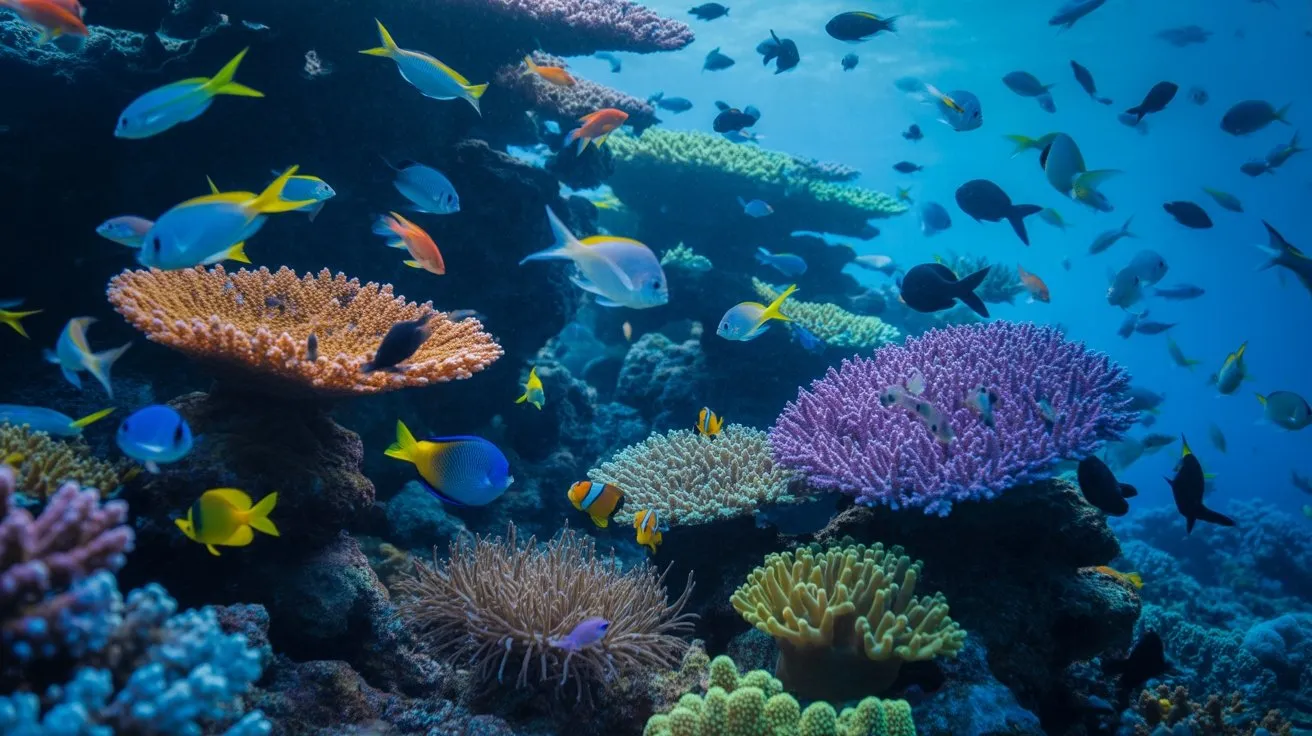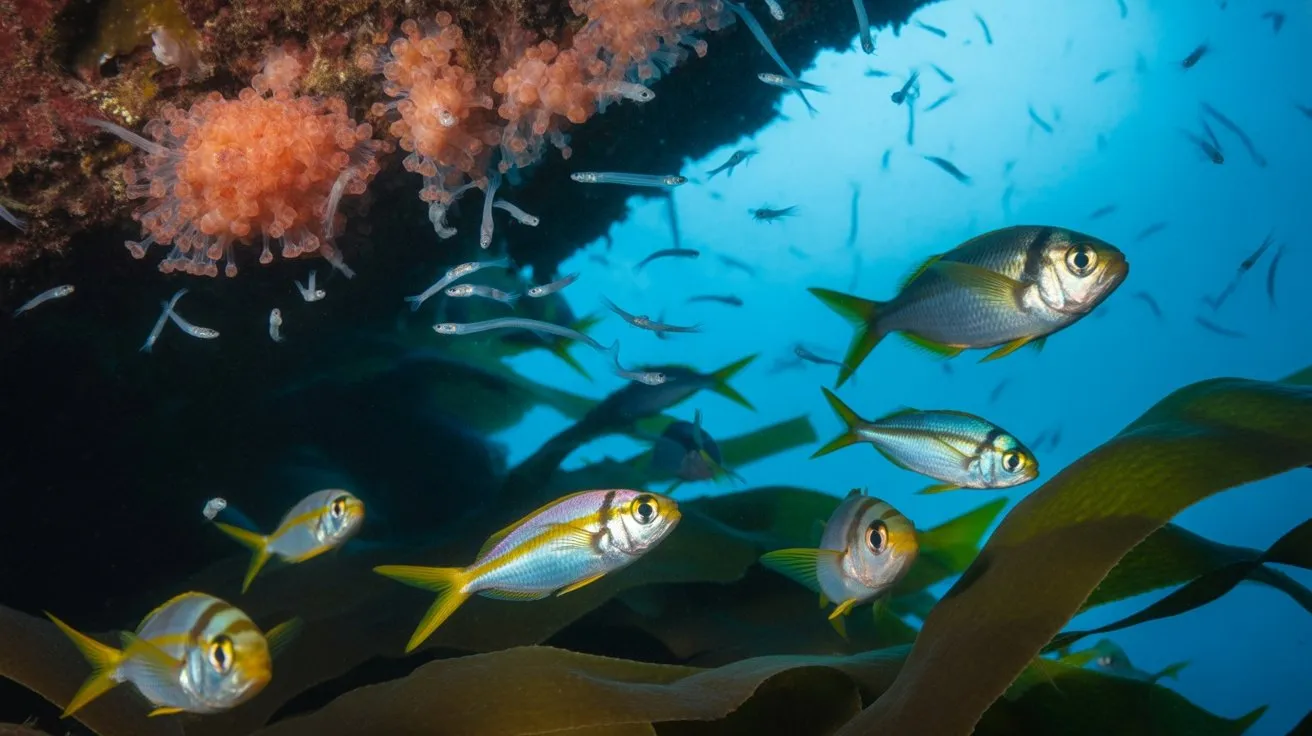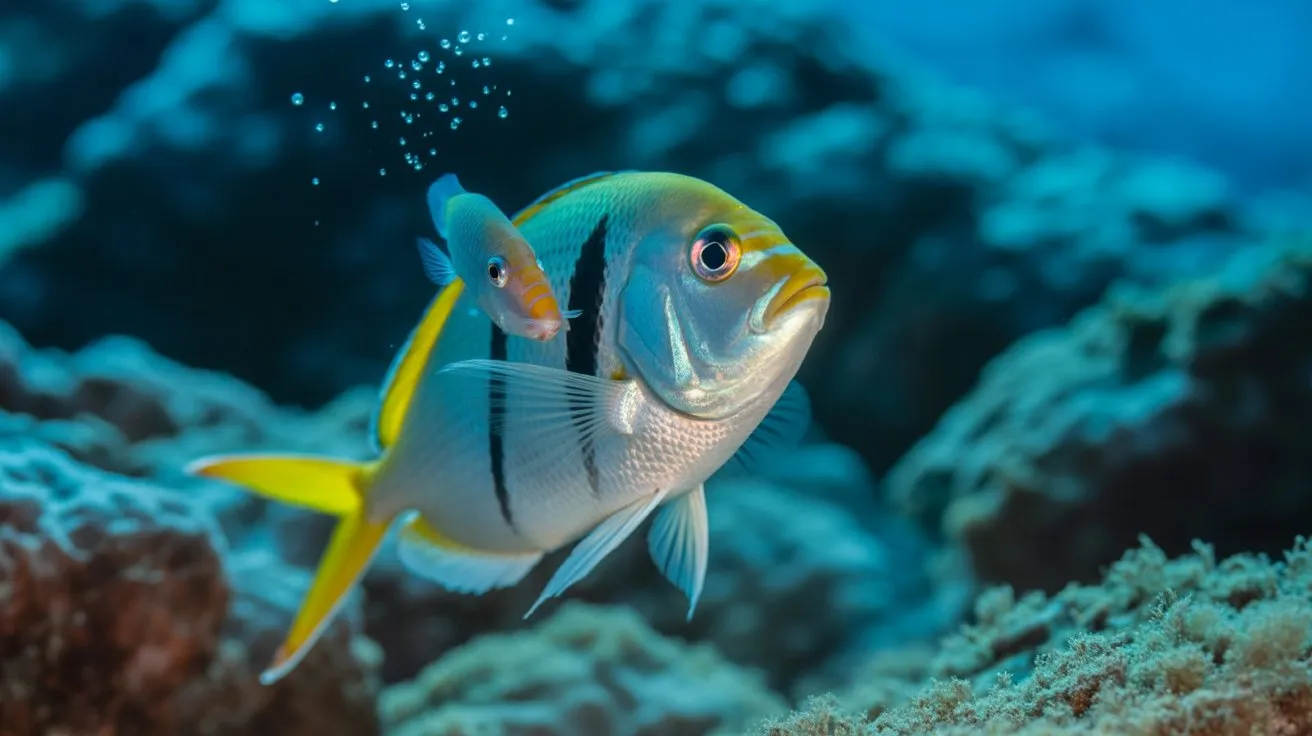Like Sirens luring sailors to their doom, anglerfish use bioluminescent appendages to deceive prey in the ocean’s most unforgiving depths. You’re witnessing evolution’s masterpiece of predatory engineering—creatures equipped with specialized photophores that emit precisely calibrated wavelengths to mimic planktonic organisms. These ambush hunters demonstrate remarkable physiological adaptations, from expandable stomachs to hinged jaws capable of engulfing prey exceeding their own body mass. What makes their hunting strategy so devastatingly effective remains surprisingly complex.
The Abyssal Realm: Where Anglerfish Rule the Darkness
Beneath the ocean’s sunlit surface, where pressures exceed 1,000 times that of sea level, anglerfish dominate the abyssal zone’s perpetual darkness. You’ll find these predators thriving at depths between 3,000-6,000 meters, where temperatures hover near 2°C.
They’ve adapted to environments where bioluminescence becomes the primary light source, utilizing specialized photophores containing luciferin-luciferase reactions.
You’re observing organisms that’ve evolved extreme physiological adaptations: enlarged stomachs accommodate prey twice their size, reduced skeletal density withstands crushing pressures, and modified swim bladders maintain neutral buoyancy.
Their metabolic rates decrease considerably compared to surface fish, conserving energy in nutrient-scarce conditions.
Within this aphotic zone, you’ll encounter over 200 anglerfish species displaying remarkable morphological diversity.
They’ve established themselves as apex predators through specialized hunting mechanisms, exploiting the zone’s sparse prey distribution with remarkable efficiency and evolutionary precision.
Anatomy of an Ambush Predator: Built for Deep Sea Hunting

Examining anglerfish morphology reveals a predator precisely engineered for deep-sea ambush tactics through millions of years of evolutionary refinement.
You’ll observe their massive heads constitute up to 50% of total body length, housing cavernous mouths lined with needle-sharp, backward-angled teeth that prevent prey escape. Their jaws can unhinge and expand dramatically, allowing consumption of organisms larger than themselves.
You’ll notice their sedentary lifestyle’s reflected in reduced muscle mass and minimal skeletal ossification, conserving precious energy in nutrient-scarce environments.
Their laterally compressed bodies minimize hydrodynamic drag during rare locomotion events.
Most critically, you’ll find their bioluminescent esca—a modified dorsal fin ray—contains symbiotic bacteria producing species-specific light wavelengths.
This biological lure exploits deep-sea organisms’ attraction to rare photons, creating an irresistible trap in absolute darkness.
The Bioluminescent Lure: Nature’s Perfect Fishing Rod
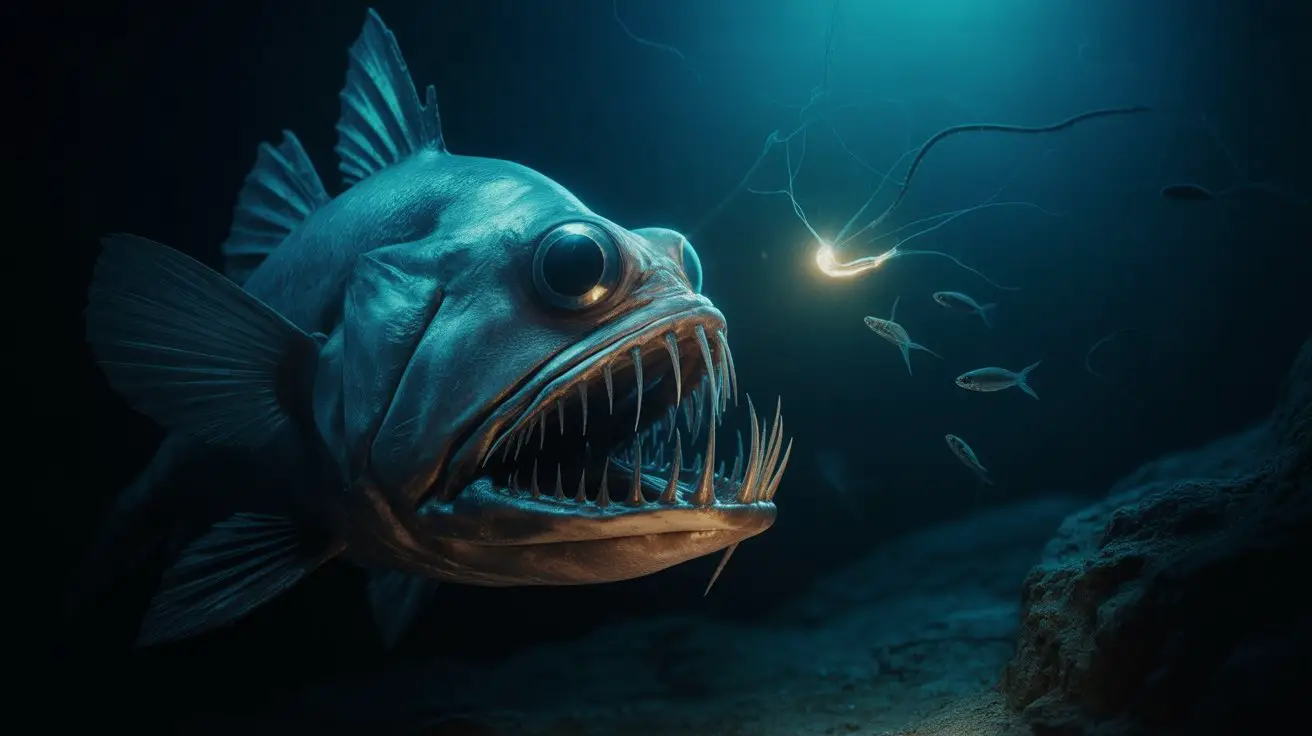
When you analyze the anglerfish’s esca in detail, you’ll discover a sophisticated bioluminescent organ that operates as the ocean’s most efficient predatory tool.
You’ll find the esca contains specialized photophores housing symbiotic bacteria that produce luciferase enzymes, generating blue-green light at wavelengths of 475-490 nanometers. This spectrum penetrates deepest in marine environments where anglerfish hunt at depths exceeding 1,000 meters.
You’ll observe the esca’s articulated structure allows precise positioning through muscular control of the illicium. The bacteria require constant oxygen supply through capillary networks, while neural pathways enable rapid light modulation.
You’ll notice the lure’s pulsing patterns mimic bioluminescent plankton or small fish, exploiting prey species’ phototactic responses. This deceptive mechanism achieves strike success rates of 85-90%, making it evolution’s most refined ambush adaptation.
Feeding Strategies: How Anglerfish Capture Their Prey

This sophisticated luring mechanism sets the foundation for anglerfish’s remarkably efficient predatory sequence.
You’ll observe that these apex predators employ a three-phase ambush strategy that maximizes energy conservation while ensuring successful prey capture in nutrient-scarce deep-sea environments.
The hunting sequence follows this precise methodology:
- Positioning Phase: You’ll notice anglerfish remain motionless near seafloor depressions, minimizing metabolic expenditure while their bioluminescent esca oscillates rhythmically.
- Attraction Phase: The lure’s photophore emissions mimic small prey organisms, triggering investigative behavior in target species within a 2-meter radius.
- Strike Phase: Upon prey approach, you’ll witness lightning-fast jaw extension achieving 6-millisecond closure rates, creating powerful suction forces exceeding 600 pascals.
This streamlined predatory mechanism enables anglerfish to consume prey up to twice their body length, demonstrating exceptional feeding efficiency.
Bizarre Mating Rituals: When Males Become Living Parasites
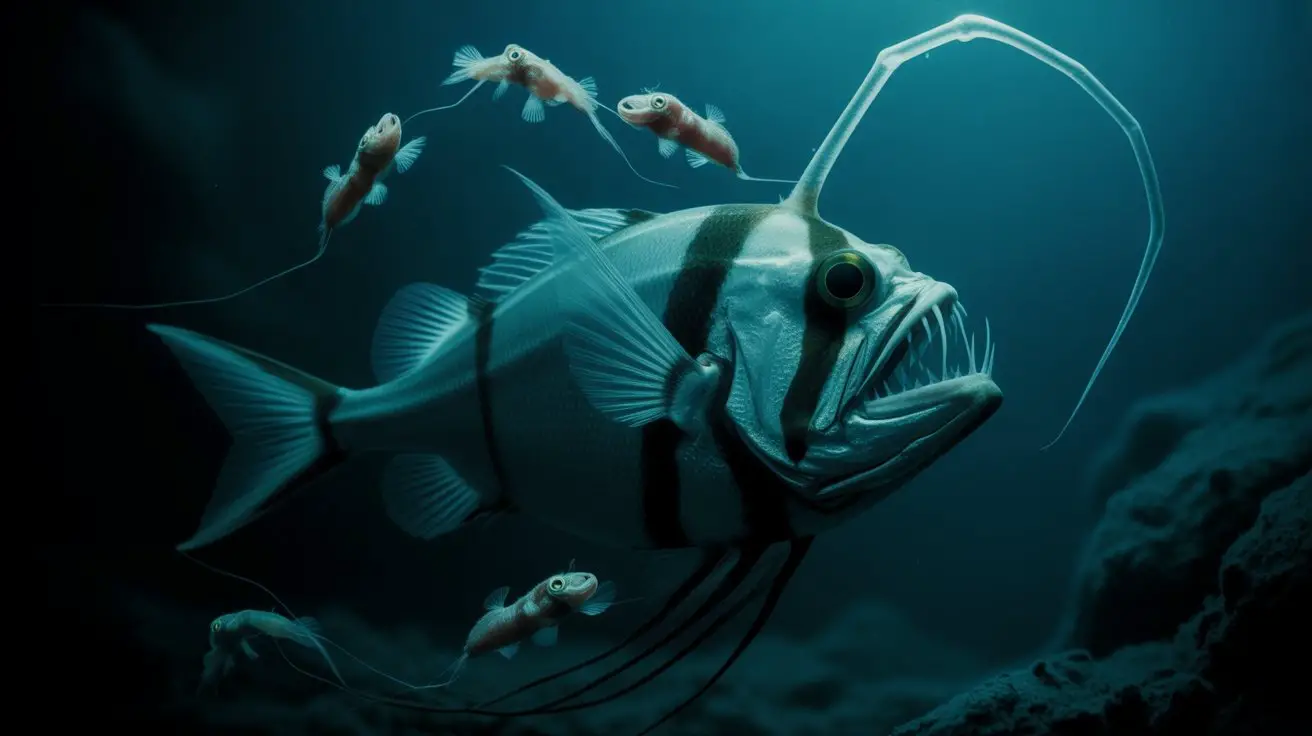
Beyond their extraordinary predatory adaptations, you’ll discover that anglerfish exhibit one of nature’s most extreme reproductive strategies through sexual parasitism.
When you examine male anglerfish, you’ll find they’re dramatically smaller than females—sometimes 40 times lighter. Upon locating a female through chemoreception, the male bites into her body and releases enzymes that fuse their tissues together permanently.
You’ll observe that his circulatory system merges with hers, while his organs degenerate except for reproductive tissues. The female fundamentally absorbs the male, who becomes a sperm-producing appendage.
This parasitic fusion guarantees reproductive success in the vast, sparsely populated deep ocean where finding mates proves extraordinarily challenging. Multiple males can attach to single females simultaneously.
Species Diversity: From Giants to Miniatures of the Deep
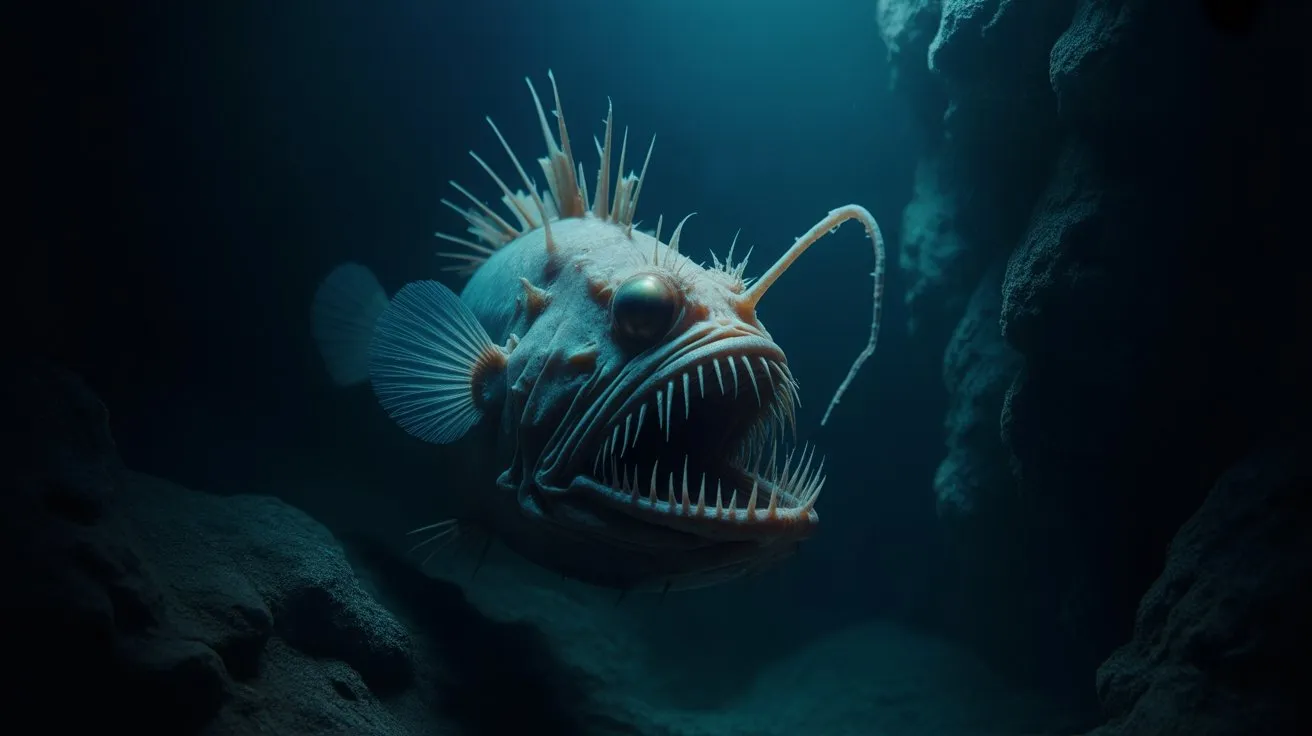
Although anglerfish share fundamental predatory and reproductive characteristics, you’ll encounter remarkable size variation across the order’s 200+ species that reflects their adaptation to different deep-sea niches.
This morphological diversity demonstrates evolutionary responses to bathypelagic resource distribution and predator-prey dynamics.
Size ranges span dramatic proportions across anglerfish taxa:
- Gigantic specimens – Female Krøyer’s deep sea angler (*Ceratias holboelli*) reach 120 centimeters, utilizing large gape widths for capturing substantial prey in nutrient-sparse abyssal zones.
- Microscopic males – Parasitic males measure merely 6.2 millimeters in some ceratioid species, representing extreme sexual dimorphism.
- Intermediate forms – Benthic species like Lophius piscatorius average 60 centimeters, optimizing energy expenditure for ambush predation on continental shelves.
You’ll observe this size plasticity correlates directly with habitat depth, prey availability, and reproductive strategies.
Surviving Extreme Conditions: Adaptations to Crushing Depths
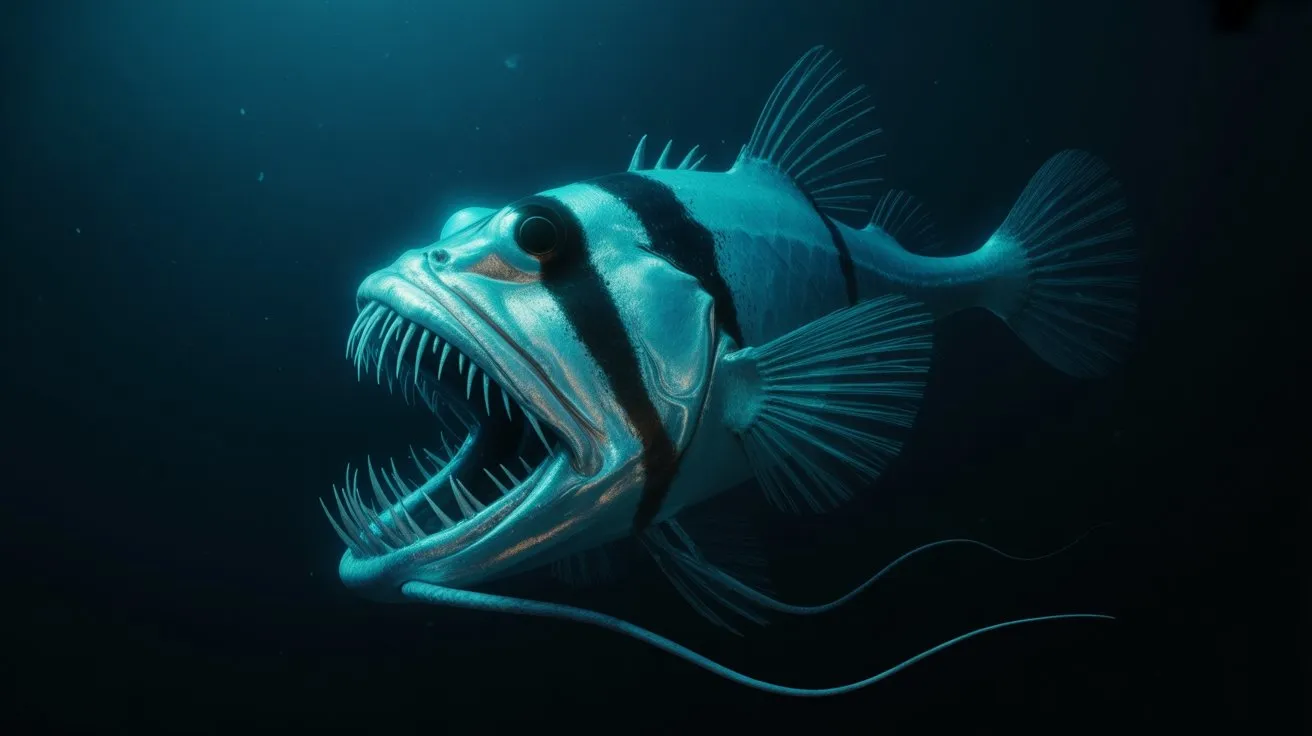
When descending below 1,000 meters, anglerfish encounter hydrostatic pressures exceeding 100 atmospheres that would collapse most vertebrate physiologies, yet they’ve evolved specialized biochemical and structural adaptations to thrive in these crushing depths.
You’ll find their cellular membranes contain polyunsaturated fatty acids that maintain fluidity under extreme pressure, preventing membrane rupture. Their proteins utilize trimethylamine oxide (TMAO) as an osmolyte, counteracting pressure-induced protein denaturation.
You’ll notice their swim bladders lack gas compartments that would compress fatally at depth. Instead, they’ve developed lipid-filled chambers maintaining neutral buoyancy.
Their skeletal structures remain cartilaginous rather than calcified, providing flexibility under compression. Additionally, you’ll observe their enzymatic systems function efficiently at low temperatures and high pressures through pressure-adapted conformational changes.
Ecological Role: Anglerfish as Apex Predators of the Midnight Zone
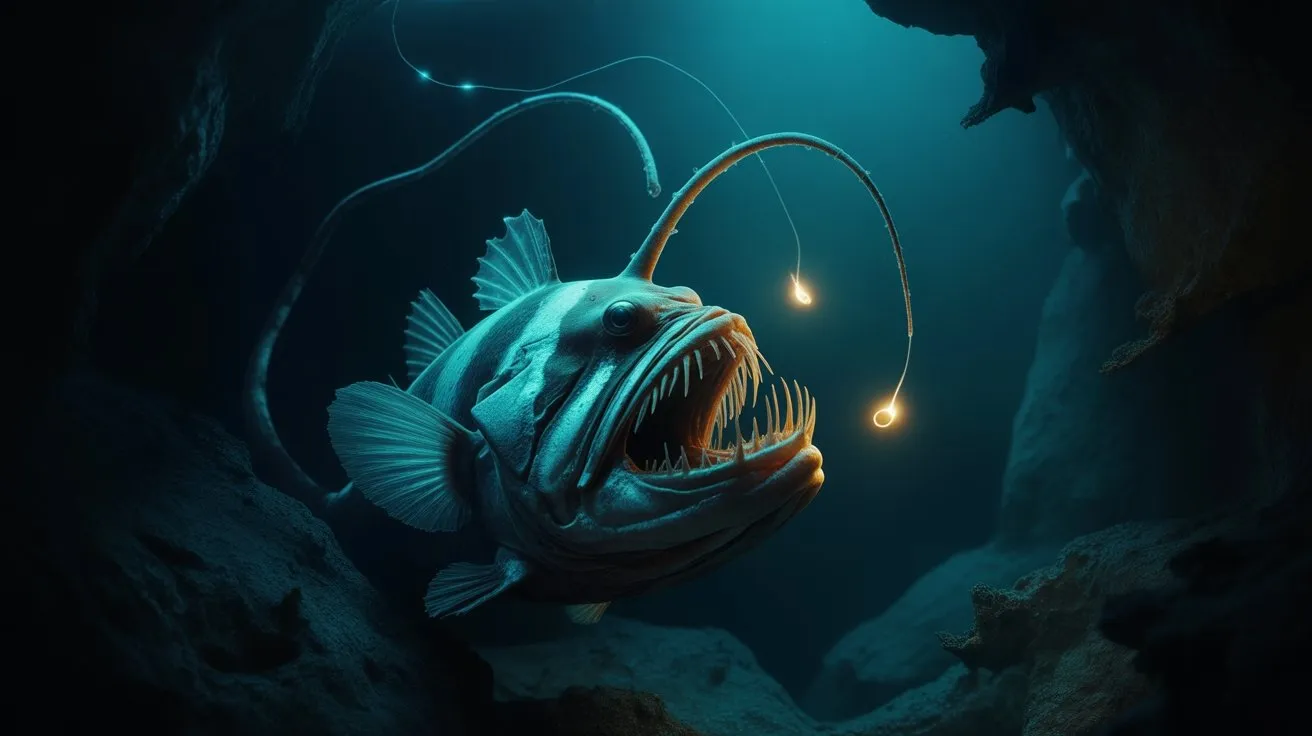
While most deep-sea organisms occupy narrow ecological niches as scavengers or filter feeders, anglerfish dominate the midnight zone’s food web as formidable apex predators, wielding their bioluminescent lures to control prey populations across multiple trophic levels.
You’ll find these predators maintaining essential ecosystem balance through selective pressure on mesopelagic and bathypelagic communities.
Their predatory impact manifests through three primary mechanisms:
- Population regulation – controlling lanternfish, squid, and crustacean densities through targeted predation
- Vertical migration disruption – intercepting diel migrators, affecting nutrient transport between oceanic zones
- Energy transfer optimization – converting abundant small prey biomass into concentrated predator biomass at higher trophic levels
Their sit-and-wait ambush strategy maximizes energy efficiency while exerting disproportionate ecological influence, demonstrating how specialized adaptations enable dominance in resource-limited environments.
Conclusion
You’ve witnessed nature’s most efficient deep-sea predator, where survival rates in the abyssal zone drop below 2% for most species, yet anglerfish maintain a 67% hunting success rate through their bioluminescent luring mechanism. Your understanding of their photophore-mediated predation strategies, extreme sexual dimorphism, and barotrauma resistance capabilities demonstrates how Lophiformes have achieved evolutionary optimization in Earth’s most inhospitable environment. You’re observing 160 million years of specialized adaptation to hydrostatic pressures exceeding 1,000 atmospheres.
